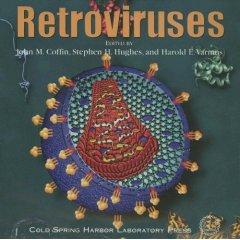| 2020ok Directory of FREE Online Books and FREE eBooks |
Free eBooks > Medicine > Basic Science > Microbiology > Retroviruses
Retrovirusesby John M. Coffin  Download Book (Respecting the intellectual property of others is utmost important to us, we make every effort to make sure we only link to legitimate sites, such as those sites owned by authors and publishers. If you have any questions about these links, please contact us.) link 1 About Book From The New England Journal of Medicine, November 26, 1998 Retrovirology is a mature yet rapidly evolving field, and this excellent book provides a very complete approach, integrating all the scientific aspects of the topic except epidemiology. Retrovirology started with the discovery at the turn of the century of tumor-associated viruses in chickens and continued with the identification of other tumor-associated viruses in a variety of animals, including mammals. At the beginning of the 1960s, progress in the study of cultured cells revealed that, although retroviruses have an RNA genome, they have replication and transformation properties that set them apart from other single-stranded RNA viruses, such as poliovirus. At that time, Howard Temin had the intuition that RNA tumor viruses must transfer their genetic information by way of a DNA intermediate. This led to the discovery of the virally encoded enzyme reverse transcriptase, which copies RNA into DNA. This reverse flow of genetic information, which contradicted the Central Dogma (that DNA makes RNA, which in turn makes protein) is characteristic of retroviruses (hence their name) and has since been found to contribute substantially to the genetic remodeling that is part of evolution. Techniques based on reverse transcription and progress in viral genetics were soon applied to the study of viral oncogenesis, which led to the finding that viral oncogenes are derived from cellular precursors. This unexpected result opened new perspectives for the understanding of cancer and of events that are key to the differentiation of cells and the development of organisms. In the early 1980s, after more than 70 years of unsuccessful searching, hunters of human retroviruses finally identified the first human retrovirus, human T-cell leukemia virus. Shortly thereafter, the last dramatic change in retrovirology was driven not by a scientific jump but rather by a public health crisis: the eruption of the AIDS epidemic. Today, retrovirology focuses in large part on the study of the human immunodeficiency virus (HIV). In record time, study of the characteristics of this virus and its replicative cycle and immunopathologic study of AIDS have yielded remarkable understanding of this disease. These advances have led to antiviral drugs that offer some promise that one day HIV infection will be controlled. Another consequence of the molecular characterization of retroviruses has been the creation of retroviral vectors, gene-delivery tools likely to have a profound influence on the emerging field of human gene therapy. The authors who contributed to Retroviruses guide the reader along all these avenues in 12 well-balanced chapters. The first 10 chapters integrate state-of-the-art information on the various retroviruses, each directing substantial attention to HIV. The last two chapters are devoted exclusively to this pathogen: one deals with the pathogenesis of AIDS, and the other with the control of HIV infection. This broad coverage provides the reader with a unique opportunity to compare pathogenic strategies and particular characteristics of the retroviruses, as illustrated by the interactions between viral envelopes and their cell-surface receptors, described in the chapter on viral entry. Each chapter can stand on its own and is preceded by an introduction written in clear, simple terms. These introductions place each topic in context in the field of retrovirology. The reader can thus immediately attack a chapter of personal interest, a great convenience with a book of more than 840 pages. Two other features of Retroviruses are highly attractive: first, the numerous superb color plates and schematic diagrams that illustrate each chapter, and second, the appendixes, which not only provide accession numbers for viral sequences, maps, and structures but also discuss the ways in which this information can be retrieved and used productively. Retroviruses is an outstanding reference book for clinicians and medical students who want to deepen their understanding of retrovirology, and it is a definite must for basic scientists working in the field. Reviewed by Luc Perrin, M.D. Related Free eBooks | Related Tags |












SEND A COMMENT
PLEASE READ: All comments must be approved before appearing in the thread; time and space constraints prevent all comments from appearing. We will only approve comments that are directly related to the article, use appropriate language and are not attacking the comments of others.